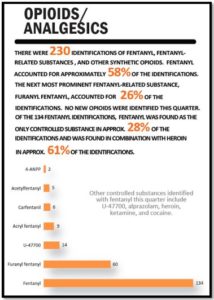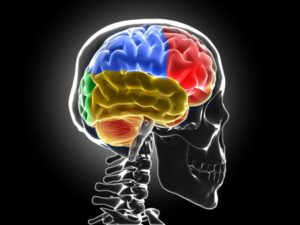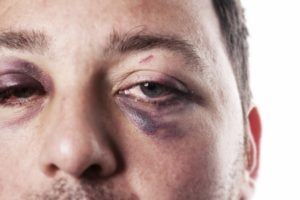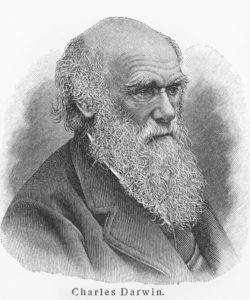Ruling over Our Genes
Coincidentally (or not), I was driving home after church one Sunday, when I heard the TED Radio Hour broadcast a program called, Hardwired. It asked how much of who we are as humans is biology; and how much is learned. There was a neuroscientist who argued that there was no such thing as free will. Then an epigeneticist said he believed that between the hard wiring of our DNA and the ultimate results there is space for free will. Although exploring the existence of free will through the lens of a scientist is an intriguing exercise, don’t expect any conclusive answers.
These men were grappling with a question that was beyond the ability of science to answer. Both individuals acknowledged, in one way or another, that they were giving an opinion on an ultimate question—the existence or nonexistence of free will. Yet they came to different conclusions. While there was no speculation why they reached such different conclusions in the TED broadcast, I think it was because they had such a fundamental difference in how they viewed human nature.
How Much Agency Do We Have Over Our Behavior?
Robert Sapolsky is professor of biology, neurology and neurological sciences at Stanford University. Although he is a self-described hippie-pacifist, he related a horrifically violent fantasy of what he would do to Hitler if he had captured him alive before his suicide. He said he’s had this fantasy since he was little. “We’re capable of a lot of stuff,” he said. When asked what human nature was, where did good and bad behaviors come from, he said it depends.
When, where, what you had for breakfast, what you had when you were a fetus in somebody’s womb back when; what your culture has been; a little bit of what your genes are; how your brain is wired up; it depends. It depends enormously on context.
According to Sapolsky, we are a confusing mixture of impulses. Every bit of human behavior has multiple layers of causality. Everything that has happened in our lives, what goes on in our culture, and even in our history is potentially relevant. “Everything that happened a second before; to everything that happened a million years before; and everything in between.”
His personal bias is that there is no such thing as human agency or free will. What we call free will is simply the biology that hasn’t been discovered yet. “It’s just another way of stating that we’re biological organisms determined by the physical laws of the universe.” With each passing year of insight into the biology of behavior, what we call free will gets crammed into an increasingly smaller space. At some point, it may even become nonexistent.
“We are biology all the way down. There is no soul; no Calvinistic self-discipline.” There is no real choice in what we do or say; it’s all conditioned by genetics, biology, culture, or history. We shouldn’t really be pleased when complimented by others. Nor should we be surprised by something a person does—good or bad. But curiously, he then added: “At the same time, I realize I have absolutely no idea how somebody is supposed to really believe that stuff.”
Sapolsky’s understanding of human nature leaves no room for a soul, for free will; for anything outside of biology: “We are biology all the way down.” He appears to be alluding here to a response to the unmoved mover paradox in cosmology. The metaphor uses an anecdote represented by the Earth (which is flat) sitting on the back of a World turtle, which is itself supported by an infinite column of turtles. When asked what the final turtle is standing on, the pithy response is that it is “turtles all the way down.”
Intellectually, he believes that what he understands from neuroscience and biology is true. But it seems he can’t consistently live with that belief.
How Do Our Experiences Rewire Our Brains and Bodies?
Moshe Szyf is a geneticist and professor of pharmacology and therapeutics at McGill University in Toronto. One of his primary research interests is with behavioral epigenetics. He described epigenetics as studying how genes are programmed. He said there is a growing consensus in the field of epigenetics that DNA alone is not sufficient to explain behavior. Szyf believes DNA has two, perhaps three identities. One is the classic sense of inheritance. Another occurs as the fetus develops in the womb of its mother.
He believes from his research there is a third-identity formed with experience, which can lead to long-term changes to the way genes are programmed. The environment is constantly changing our genes, so they have both plasticity and a fixed character. We need both aspects— the immutable and the mutable acting together. “This is the amazing paradox and challenge of life.”
DNA, he said is not merely a sequence of letters; a script of human development. It’s rather like a dynamic movie, where our experiences can be written into the movie. We have some agency, but it is split between several sources: our individuality, our family, our community, our country and the world. And there are interactions between all of these. So where does he see a place for free will?
I think that there is, between the hard wiring and the ultimate results, there is a space where freedom of will is operating. And it is operating on these epigenetic processes. If we understand these processes, tap into these processes, we can be ruler over our genes, by providing the right environments; and that is where we as societies have responsibility.
From his perspective, Moshe Szyf sees room for free will and human responsibility—aspects of what has been called the human soul. It’s not affirmed or described by him, but at least he sees a “space” where free will could be; even if there is no concrete scientific way to confirm it. Szyf’s perspective on human nature acknowledges a potential place for the soul, even as he hastens to qualify it as operating on epigenetic principles.
Robert Sapolsky believes humans are biology “all the way down.” Yet interestingly, he isn’t sure how we are supposed to accept that’s true. He seems to imply that lived human experience challenges the scientific evidence that progressively forces the concept of free will into a smaller and smaller space.
When the question becomes what can neuroscience or epigenetics tell us about free will, we’ve gone beyond the realm of science into what Karl Popper called ultimate questions. “It is important to realize that science does not make assertions about ultimate questions—about the riddles of existence, or about man’s task in this world.” There is a limit to what we can learn scientifically about ourselves and about the universe. The question of the existence of free will and the soul reaches beyond that limit.
The biologist and Nobel Prize winner P. B. Medawar agreed with Popper. He believed it was logically outside the competence of science to answer ultimate questions. He said: “There is a prima facie case for the existence of a limit to scientific understanding.” This limitation is made clear by science’s inability to answer ultimate questions such as: “How did everything begin?”; “What are we here for?”; “Is there a human soul?”
Doctrinaire positivism—now something of a period piece—dismissed all such questions as nonquestions or pseudoquestions such as only simpletons ask and only charlatans of one kind or another profess to be able to answer. This preemptory dismissal leaves one empty and dissatisfied because the questions make sense to those who ask them, and the answers, to those who try to give them; but whatever else may be in dispute, it would be universally agreed that it is not to science that we should look for answers.
Medawar’s observations here are helpful in reconciling the different conclusions of Sapolsky and Szyf on free will. Sapolsky’s philosophy of science seems to have a rather large dose of positivism. Human nature is completely biological. There is no room for non-biological or pseudo-scientific concepts like free will or a soul. What we call free will is simply undiscovered biology. And yet, he admits to a sense of dissatisfaction or emptiness, by noting he has no idea how anyone can believe it.
For more discussion on free will, read “Ability to Choose … Within Limits.”













